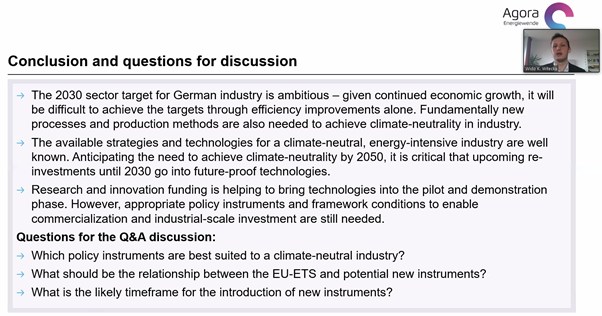- Introduction
- Industrial Emissions
- Strategies to avoid process-based emissions https://t.co/7eOBQc25bA
- Policy instruments for enabling a climate-neutral industry https://t.co/CVekzrPmrT
- Conclusions
- Questions and answers https://t.co/rtg9jMLhlH
.@KWitecka from @AgoraEW on:
“Technology and policy options for a climate-neutral energy-intensive industry”
Options for the steel, cement and chemical industries
https://t.co/jwHgxaGVwl https://t.co/ywpj7FuJX8
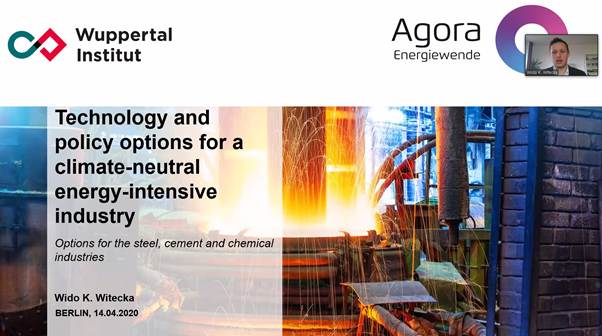
Introduction
Industry has long been out of the discussion, why?
- “Hard to abate” -> high share of process emissions, new tech needed
- Allocation techniques: direct emissions (20 %) vs. higher if elec. + heat are allocated, making it the highest CO2 source
Rationale :
- Avoiding process emissions = key
- Long lifetime of industrial plants : future investment has to be in new technologies, otherwise no possibility of reaching the Paris agreement
Industrial Emissions
Worldwide
3 sectors account for 66 % of industrial emissions
Most CO2-intensive:
- Steel
- Cement
- Fertilizers
- Plastics
Where do they come from?
- China
- Europe
- India
- US
- Japan https://t.co/17IwWaEqxv
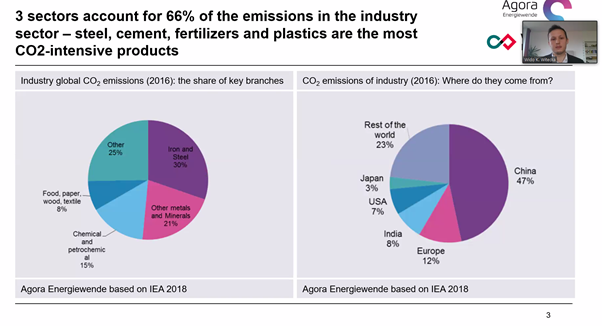
Germany
Industry emits 1/5th of national territorial emissions, of which 60 % are steel, chemicals and cement https://t.co/nGkiA5XGYD

Despite energy efficiency measures, emissions stayed constant.
Energy efficiency measures are only able to compensate for continued demand.
This applies to a global scale.
If we believe in continued economic growth, energy efficiency measures are not sufficient. https://t.co/PbEDJY34l3
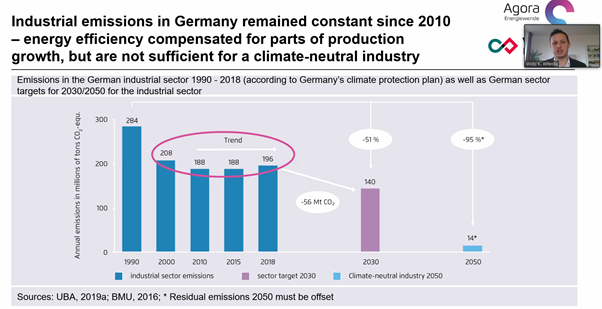
Strategies to avoid process-based emissions https://t.co/7eOBQc25bA
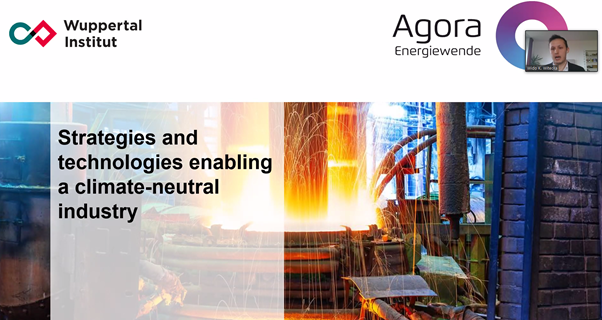
3 types of strategies:
- Direct/indirect electrification
- Resource use : circular economy, material substitution (wood, ..) –> major effect on energy use
- Carbon capture, utilization and use of sustainable biomass https://t.co/YC0tQjfWMS
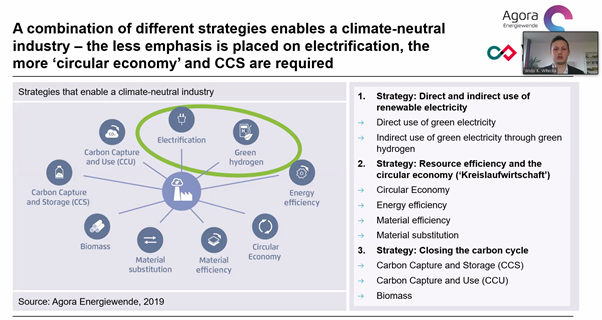
Key technologies
For..
- basic chemicals -> different technologies available
- steel -> hydrogen playing a central role
- cement -> carbon capture will still play an important role (if not replaced by other materials) https://t.co/rzEyAuEg9Z
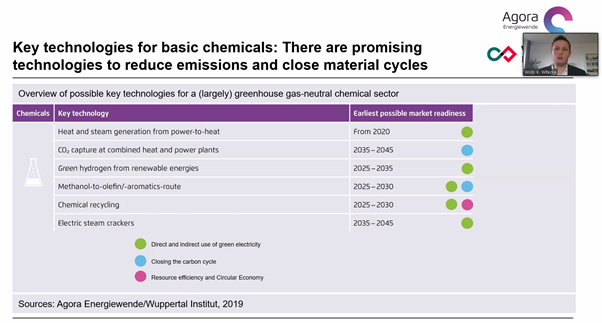
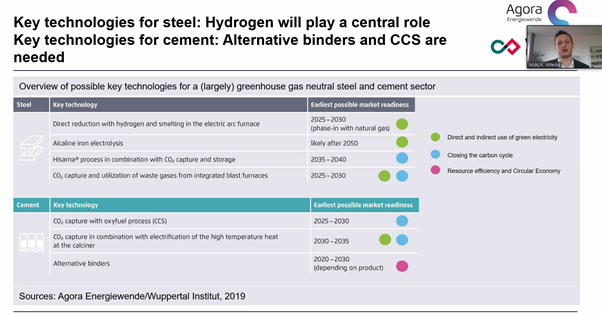
Costs : @AgoraEW study database with…
- Abatement potential
- Technology specific costs
- Technology readiness level https://t.co/rlQw2tZjQt
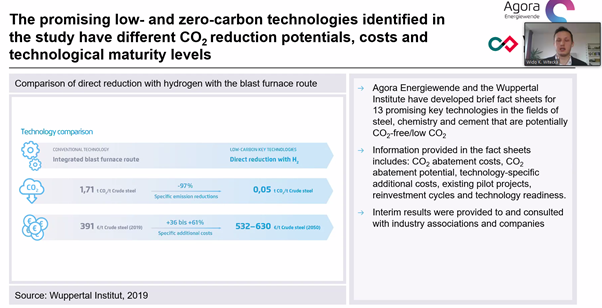
Industry re-investment needs
Example of steel: technology could be ready and deployed by 2025 from a technical point of view. Even if not enough green hydrogen available, temporarily natural gas could be used.
Important not to lift the re-investment cycle beyond 2025. https://t.co/JaTwdEQqil
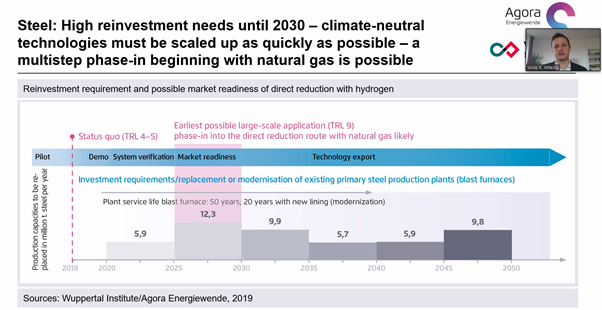
European/German industry is working on different pilot plants, but large-scale deployment framework is missing https://t.co/E7nFVeDd8C

Policy instruments for enabling a climate-neutral industry https://t.co/CVekzrPmrT
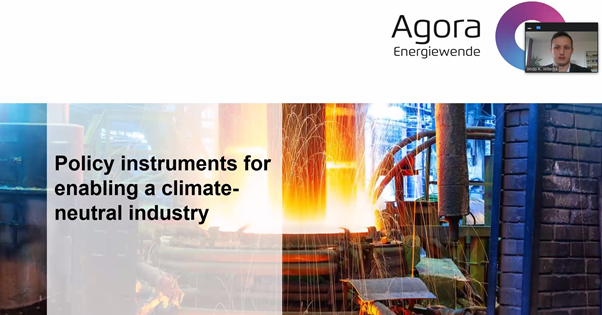
Key message: all plants that are built today, will still exist in 2050 (lifetimes of 20/30 tot 70 years are not unusual)
–> any future investment from now on must therefore be climate neutral https://t.co/SjUry8UqDq
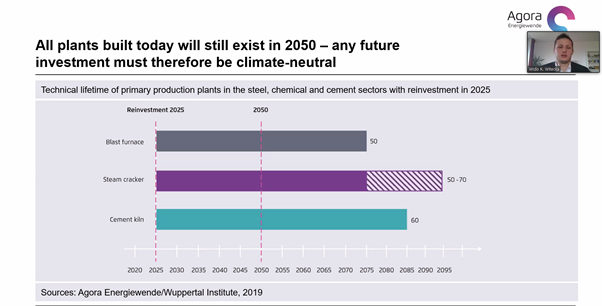
Re-investment need
Example : Germany.
53 % of steel infrastructure will need to be replaced by 2030 59 % for chemicals 30 % in cement-sector
Employment : lots of people are affected by investment decisions. Strategic decisions have big impacts. https://t.co/7Sp9nSwzBC

Marginal abatement costs and carbon price
…but marginal abatement cost of new technologies are significantly higher than conventional tech.
The CO2-price in the EU ETS is not enough to introduce these technologies to the market.
Therefore, other policy instruments needed. https://t.co/lLvvk34mlo
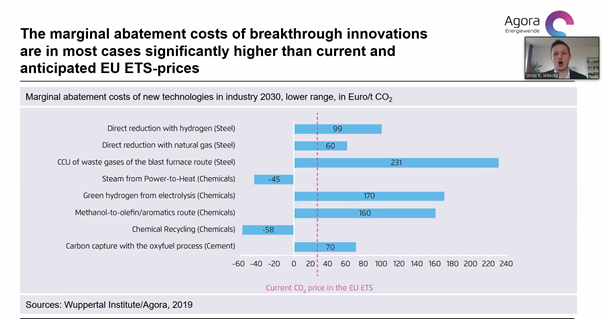
Other policy options
[I] High CO2-price with border adjustment, under discussion in Europe
[II] Policy mix:
- Carbon contract for difference: covering additional cost of green tech
- Green product markets: H2/low-carbon quota
- Circular economy: building/products standards https://t.co/BcsP0pcrdV
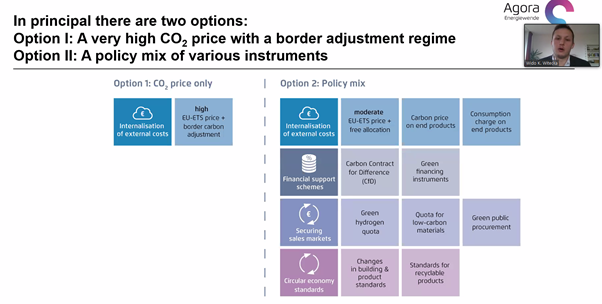
Industrial value chain perspective
Upstream -> competitive prices for electricity, infrastructure for CCS, green hydrogen quota Midstream -> minimum CO2 price, carbon contract for difference, green financing instruments Downstream -> low-carbon materials quota / standards https://t.co/zASuURECOj
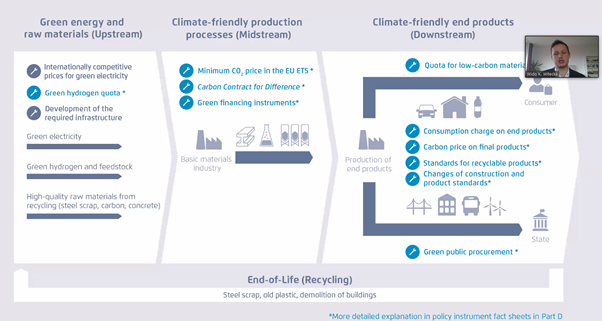
Option I : High CO2 price with border carbon adjustment
If basic materials are imported -> carbon adjustment
If export to other countries -> also border adjustment? Question if this is feasible (WTO)
Tracking of CO2 content needed: difficult administration, room for fraud https://t.co/PU7C5gFuYe
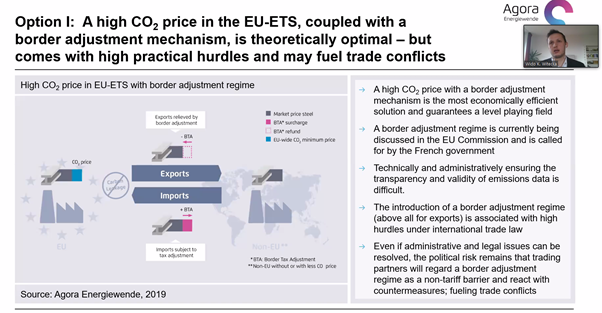
Option IIA: Carbon contract for difference
Money coming from carbon content surcharge on products https://t.co/IfTXCxkHez
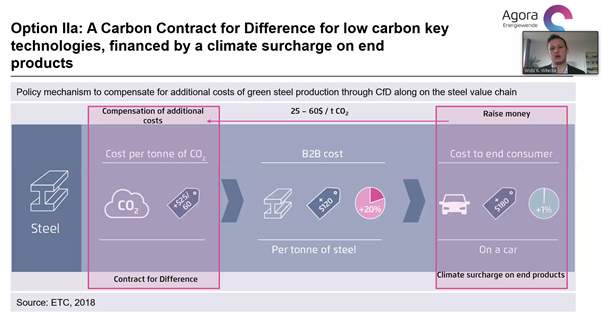
Illustration for steel industry:
Break even of CO2 abatement around 100 EUR / tonne CO2
Still free allocation based on old allocation benchmark
Difference would be covered by carbon contract for difference https://t.co/djF7UWOOpm

Conclusions
-Energy efficiency is not sufficient -Ambition is high for 2030 -It is not possible to focus first on other sectors, new investments must be carbon neutral now.
Questions and answers https://t.co/rtg9jMLhlH
